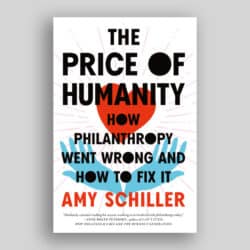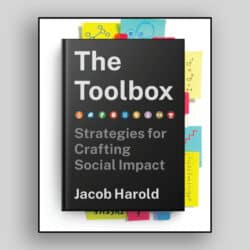Giving: Celebrated, Scrutinized, And Studied
Sandy Houston
Grassroots Philanthropy: Field Notes of a Maverick Grantmaker
Bill Somerville with Fred Setterberg, Berkeley, Ca.: Heyday Books isbn 978-1-59714-084-3
Just Another Emperor? The Myths and Realities of Philanthrocapitalism
Michael Edwards, New York, N.Y.: Demos: A Network for Ideas & Action and The Young Foundation
(web publication: www.justanotheremperor.org)
isbn 978-0-9816151-1-0
Giving, especially big giving, is being celebrated, scrutinized, discussed, and increasingly studied as never before. The emergence of enormous new fortunes and, in many cases, a desire on the part of entrepreneurs to contribute to the public interest not just some of the proceeds but also the skills and mindset that created their enterprises has raised philanthropy’s profile, particularly in the United States. The proliferation of foundations has created a class of grantmaking professionals, while around them has arisen a small industry of consultants, academics, service providers, and commentators. These factors, together with philanthropy’s ever-increasing scale and ambition, have provoked a series of books recently ranging from broad critiques of the implications of large-scale private wealth applied to fundamentally public processes to how-to manuals for grantmakers.
Two recent publications illustrate some of this variety. Both Just Another Emperor, by Michael Edwards, and Grassroots Philanthropy, by Bill Sommerville, are written by veteran grantmakers. Both men are passionate about philanthropy’s potential and, each for different reasons, are highly critical of its effectiveness, impact, and current orthodoxies. Where Somerville is concerned that the practice of grantmaking become more effective, nimble, and modest, Edwards is intent on challenging what he perceives to be the excessive influence of business thinking onto the field of social change, and on exploring its dire implications for civil society. Both men believe in the crucial role civil society must play in social transformation and each makes contrasting yet compelling cases about what thoughtful and brave engagement in the facilitation of social change can yield.
Bill Somerville’s Grassroots Philanthropy: Field Notes of a Maverick Grantmaker is a short, pithy, and provocative book. It is both a pointed critique of current practice in large private foundations and a set of practical recommendations on how to conduct effective, quick, small-scale community-based grantmaking. He illustrates his points with stories drawn from his own long experience in the field, and particularly from the experiences of the Philanthropic Ventures Foundation, the organization he founded in San Francisco.
Somerville begins by noting the extraordinary advantages enjoyed by the foundation sector: enormous wealth, minimal constraints, and potent position power. In light of all this, he asks, “Why aren’t we…doing a much better job?” His answer is that foundations are too slow, cumbersome, and bureaucratic and, more damningly, that they are terrified at the prospect of failure. In response, Somerville offers an approach based on small grants (many under a thousand dollars), made very quickly with a minimum of paper and procedures. He grounds his method on a deep knowledge of the community in which he works, his constant search for exceptional leaders whom he can trust, and a high degree of comfort in his own intuition.
Somerville makes a number of useful and refreshing points. He warns against the arrogance and inertia that can develop within a foundation. He emphasizes the need for grantmakers to leave the comfort and isolation of their offices and get out into the field. He argues for less paper, less process, more gut instinct, and more risk. But, perhaps most importantly, he makes the case that good grantmaking is founded on trust: trust in the person in whom you invest, trust in your assessment of the need, the timing, the opportunity, and trust that you have made good decisions.
All grantmakers could benefit from Somerville’s pragmatic, forthright advice. Unfortunately, in giving it, he has inflated both the uniformity and the scale of the deficiencies in the foundation work he opposes. Not all foundations are risk-adverse bureaucracies that live in fear of the new and unfamiliar. More significantly, Somerville’s model, while nimble and lean, does not address the range of interventions necessary to make social change As he notes, the approach he proposes “bypass[es] efforts at structural change and the reshaping of public policy.” Yet arguably it is precisely skilful and prolonged engagement in these areas that is most likely to yield significant social change. This type of work, vexing, complex, and slow moving as it may be, is less amenable to the type of quick, individualistic approach espoused by Somerville. He has made a good and persuasive case for his useful pragmatic approach to investing in community building. The scope and scale of its utility is less persuasively argued.
Michael Edwards, in Just Another Emperor, is eager to wade into the larger conversation of how social change occurs and what role philanthropy can and should play. His is a rare example of a book on philanthropy that has attracted comment and controversy beyond grantmaking circles. Writing in 2007, Edwards frames his arguments around what he views as the “hype” associated with the ascendance of business models and practices in the approach to philanthropy. There is some irony in the timing of his work, as the financial triumphalism so ubiquitous two years ago has now receded to some degree, as, arguably, has the weight and prestige of the associated grantmaking model.
Edwards positions his target in the first paragraph of preface: “A new movement is afoot that promises to save the world by revolutionizing philanthropy, making non-profit organizations operate like business, and creating new markets for goods and services that benefit society. Nicknamed ‘philanthrocaptalism’ for short, its supporters believe that business principles can be successfully combined with the search for social transformation.” Edwards sets out to debunk what he sees as the excessive claims of success made by the proponents of this market-based form of philanthropy. His concern extends beyond battling its inflated claims to what he views as the danger this form of engagement represents for the community-based underpinning of democracy.
Edwards, until recently a program officer with the Ford Foundation, has a clear set of ideas on what constitutes the levers of social change. He argues for the fundamental role of social movements, politics, and the state in systemic change. He believes passionately in the power of civil society—that loose assembly of nonprofits, NGOs, associations, community groups, religious organizations, and foundations—to envision and achieve a better world. Edwards writes of civil society as driven to “change systems and structures, institutions and relationships, and norms and values, so that everyone can participate fully in the benefits of the social, economic and political life—and care for themselves, each other and the planet in the process.” He notes that no great social cause of the 20th century, whether civil rights, the women’s movement, or environmentalism, was mobilized by the power of the market. Yet the philanthrocapitalists, Edwards says, assume inefficiencies and amateurism on the part of the civil society, and “make a fetish out of certain kinds of innovation that privileges business thinking, rather then looking at the impact that civil society makes on its own terms.” The effect can be grim, resulting in a “decrease in other-directed behavior,” an increased emphasis on service at the expense of system change, less capacity within the sector for advocacy, and an overall reduction in participation by community members.
Edwards, despite the vigor of much of his attack, is prepared to credit the philanthrocapitalists with certain achievements. He acknowledges that in some areas, such as some forms of social goods and services, and environmental products (he points to examples like micro-credit, malaria prevention, and green technologies), increased production at reduced costs within a market driven model can be helpful.
Edwards calls his book a pamphlet, and it is exactly that in the best sense: provocative, attacking, fearless, and broadly drawn. Not surprisingly, it suffers from one of the drawbacks of pamphlets: a propensity for exaggeration and caricature. The quotes he produces by leading members of the movement tend to undermine his thesis. Figures like Melinda Gates and Pierre Omidyar clearly acknowledge the limitations and specificity of the model. It is the commentators and journalists, not the principals in the leading philanthropies cited, who make the most excessive claims for the power and impact of the approach. It is difficult to avoid the impression that the dragon Edwards really wants to slay is the system that has yielded such extreme disparities of wealth and privilege. He is reacting to what he perceives as a hyper-capitalism that has seized control of much of the agenda at the expense of government and the third sector and which is fundamentally uninterested in the structural changes needed to achieve real social justice. The philanthropies that are a product of these conditions are fundamentally suspect to Edwards, as ultimately they are creatures of a system they have no motive to dismantle.
Edwards’ book is very readable. It is a pity that in his eagerness to engage he did not take the time to more clearly separate and distinguish crucial terms and concepts: venture capital, social enterprise, corporate social responsibility. Each term is addressed in the book, but the concepts and their implications remain slippery and elusive. His conclusion that the values and actions of business and civil society are distinct and largely unbridgeable seems draconian and extreme. His book may better serve as an effort to provoke a more cogent understanding of the paths to intersection and effective collaboration between the two spheres.
Edwards has set out to create a platform for a pressing and timely discussion. He concludes his book by noting that the stakes are high: $55 trillion are expected to come into philanthropy in the next 40 years in the United States. How will these vast resources by used? Will they go toward the pursuit of social transformation or will they be used to treat the symptoms of the current social order? That is a debate worth having, and Edwards has issued a provocative invitation to the new business tycoons to join in.
To a Canadian whose philanthropic sector is both small and quiet, the conviction, ambition, and contention emanating from books like these is welcome. While the American examples and situations in which both are rooted do not travel to us in their entirety, the fact that the field now has an emerging literature and the prospect of strong views and disagreements is cause for celebration.
Sandy Houston is President of the Metcalf Foundation, 174 Avenue Road, Toronto, on m5r 2j1. Email: shouston@metcalffoundation. com.
The Foundation addresses the issues of poverty reduction, ecological integrity, and creative vitality through the development of new thinking and practice, the advancement of dynamic organizations, and the strengthening of individuals to conceptualize and lead change.


